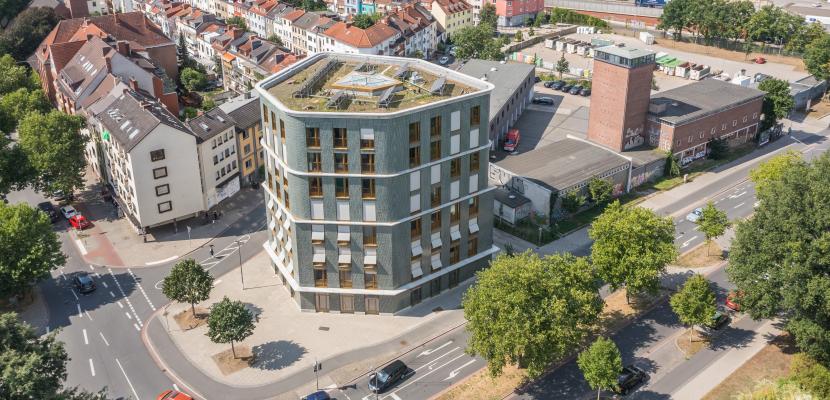
Urban greening on private sites through regulatory standards and funding programs

About this good practice
As a town state, a large potential in Bremen for nature-based carbon offsetting lies in urban green infrastructure. To strengthen urban green for climate change mitigation and adaptation on privately owned sites Bremen has recently made green roofs mandatory for new buildings with flat roofs from a size of 50 square meters and has banned gravel gardens by the year 2027.
This is complemented by smaller funding programs for unsealing, green roofs and facade greening at privately-owned buildings. For an application for facade greening, for instance, the funding provider checks whether the measure is technically, ecologically and economically viable and determines the eligible costs (construction costs including ancillary technical costs and completion maintenance). Up to 50% of the eligible costs, up to a maximum of EUR 5,000, will be granted for the installation of a new green façade.
Currently this measures are reviewed also in the context of urban biodiversity conservation and in particular the protection of insects. Both measures directly link to two measures of the policy instrument Climate Action Plan to reach climate neutrality by 2038.
Resources needed
The regulatory component (green roof requirement, gravel garden ban) does not require public funding. When starting smaller funding programs, good experiences can already be made with € 100,000 per year and per funding program (green roof, facades, unsealing).
Evidence of success
Ongoing implementation of green roof projects. There is so far no systematic reporting of green roofs (amount, size), but these can in principle also be recorded from arial photos (using e.g. artificial intelligence methods).
Existing gravel gardes are regularly reported to the public authorities.
The funding schemes can be evaluated by the demand for funds. In Bremen the applications in the funding schemes for green roofs are regularly above the total available subsidies.
Potential for learning or transfer
The potential to learn from this good practice lies in the mixture of command and control instruments (green roof obligation, gravel garden ban) and small-scale support programs for nature-based solutions on private properties in cities. On the one hand, the command and control component provides landowning citizens with a clear and binding roadmap. It also ensures a broad impact. On the other hand, the funding programs offer support in this transition process. In addition to financial support, this also includes information and advice.
Further information
Good practice owner
You can contact the good practice owner below for more detailed information.